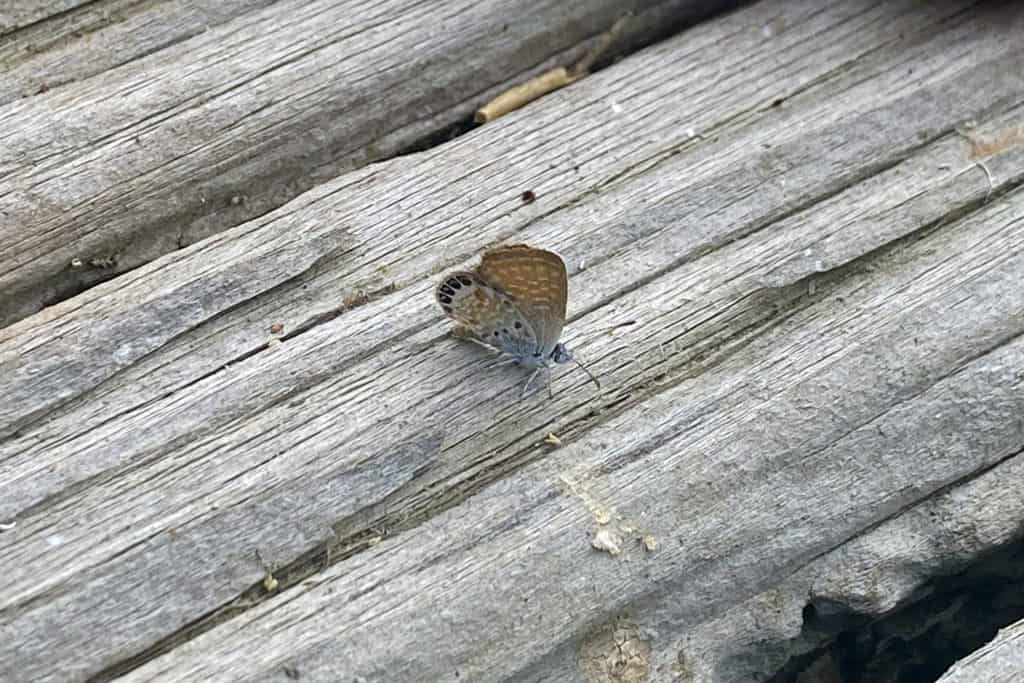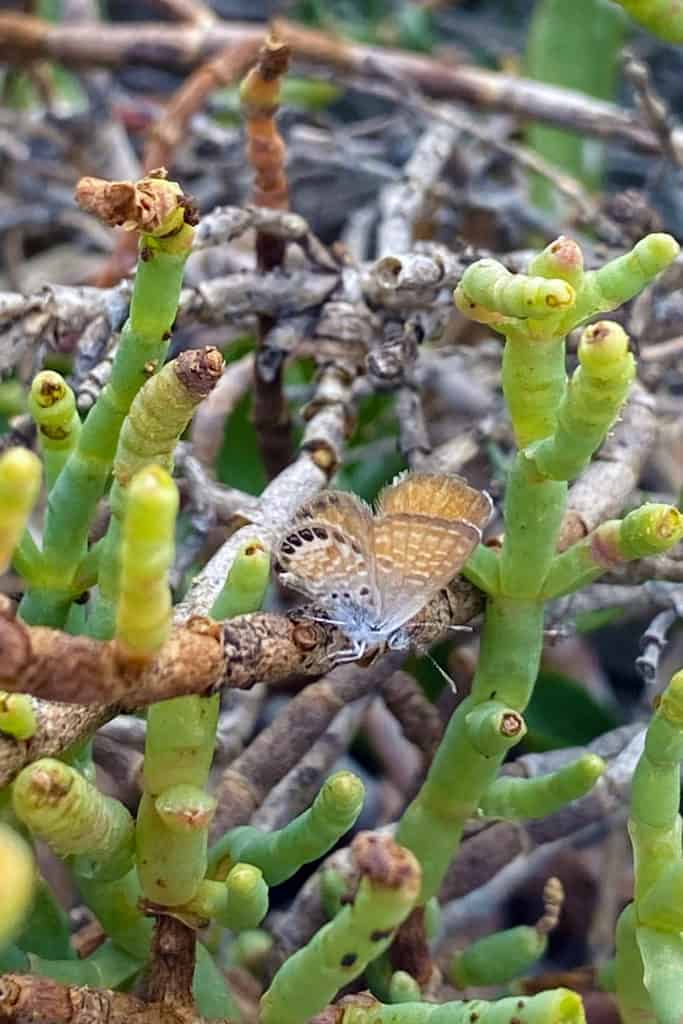The Western Pygmy-Blue is one of the world’s smallest butterflies, and the smallest in North America, clocking in with a wingspan of only ½ – ¾ inch. That’s only about the size of your thumb nail! Their wings are a lovely copper color which fades to pale blue at the base, with a white fringe and small black dots at the margin.

Every year, our Habitat Restoration Team takes comprehensive botanical surveys of the restored tidal marshes of San Francisco Bay. We quantify the progress made at each site by documenting the presence and vigor of each plant species, and the relative cover of native vs. non-native plants. We also track the number and species of plants we planted at a restoration site, the pounds of invasive species we removed, and the gallons of water we used to irrigate the native plants we’ve installed. Monitoring sites is a crucial step to informing our habitat restoration methods and strategies.

This year during monitoring, we were joined by clouds of these tiny blue butterflies, as the adults sought mates from July to September. They are common across California and Western North America, and have even made the intrepid flight to Hawaii. These miniature insects feed on the flower nectar of common salt marsh plants like salt bush (Atriplex sp.) and pigweed (Chenopodium album), before laying eggs on the surface of the leaves. By flying flower to flower, the Western Pygmy-Blue acts as a pollinator, which is vital to the health of the shoreline ecosystem. Pollination promotes the reproductive success of native plants, which in turn provide food and shelter to other species, like the endangered salt marsh harvest mouse.
Save The Bay models our restoration strategy around the natural processes of native habitats, working to provide the best chance for success well into the future. Seeing the Western Pygmy-Blue fly around, pollinate, and thrive at our restoration sites reminds us that even the smallest part of an ecosystem has a role to keep a healthy, natural balance.

















































